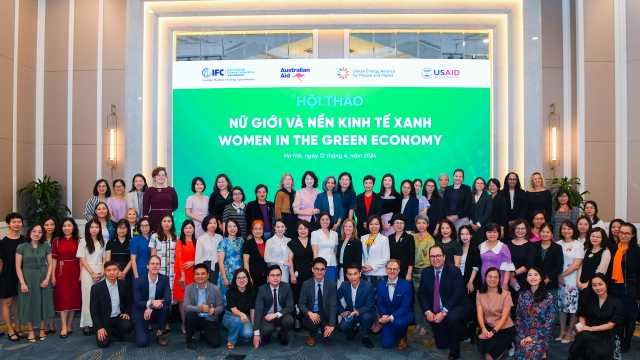National Focus
WB raises forecast for Vietnam's economic growth to 6.8 per cent
Vietnam's economy is forecasted to expand by 6.8 percent in 2018 before moderating to 6.6 percent in 2019 as capacity constraints become more binding, according to World Bank.

In its June 2018 Global Economic Prospects report, World Bank (WB) says that a strong rebound in export activity after two years of weakness will help boost Vietnam's economic growth.
Among commodity importing economies, growth in Vietnam and the Philippines remains robust, but high capacity use rates may limit further expansion.
Accordingly, Vietnam's economy is projected to grow at the rate of 6.8 per cent this year before moderating to 6.6 per cent and 6.5 percent in 2019 and 2020 respectively as capacity constraints become more binding.
Earlier in this April, WB forecasted that Vietnam’s economic growth would decline to 6.5 per cent in 2018, after growth accelerated to more than 6.8 per cent last year. The growth rate was expected to stabilize over the next three years, with the potential to surprise on the upside in the short run, especially if the global recovery remains intact.
Despite recent softening, World Bank predicts that global economic growth will remain robust at 3.1 per cent in 2018 before slowing gradually over the next two years, as advanced-economy growth decelerates and the recovery in the major commodity-exporting emerging market and developing economies levels off.
Activity in advanced economies is expected to grow 2.2 percent in 2018 before easing to a two per cent rate of expansion next year, as central banks gradually remove monetary stimulus.
Growth in emerging market and developing economies overall is projected to strengthen to 4.5 percent in 2018, before reaching 4.7 percent in 2019 as the recovery in commodity exporters matures and commodity prices level off following this year’s increase.
World Bank's outlook is also subject to considerable downside risks. Increased protectionist tendencies in some large economies continue to create uncertainty about future trading relationships. The imposition of trade restrictions by advanced economies would hit the more open economies of the region the hardest.
While the economic impact of tariffs on imports to China, which are being considered by the U.S. administration, would likely be manageable, an escalation could lead to disruptions that would have significant regional effects.
A faster-than-expected tightening of global financing conditions and associated stress could reduce capital inflows, heighten financial market volatility, and put pressure on regional exchange rates and asset prices.
According to World Bank's report, if a combination of downside risks were to materialize, it could trigger a sharper-than-expected slowdown in regional growth.
Domestic vulnerabilities—elevated domestic debt and large external financing needs in some countries—would amplify the impact of external shocks, especially where policy buffers are limited, and dampen growth.
World Bank assesses impacts of CPTPP on Vietnam’s economy
Resolution 68: A turning point in Vietnam's private sector policy
As Vietnam sets its sights on becoming a high-income country by 2045, Resolution 68 lays a crucial foundation. But turning vision into reality requires not only good policy - but also unwavering execution, mutual trust and national unity.
Vietnam plans upgrade of Gia Binh airport to dual-use international hub
Vietnam plans to upgrade Gia Binh Airport in Bac Ninh province into a dual-use international airport to support both military and civilian operations, the government said on Friday.
Lives under the scorching sun: Outdoor workers racing against climate change
Under unforgiving conditions, the outdoor workers - the backbone of urban economies - endure the harshest impacts of climate change while remaining overlooked by social safety nets. Their resilience and struggles highlight the urgent need for better protection in the face of rising temperatures and precarious livelihoods.
CEO Group chairman unveils guide to Vietnam real estate for foreigners
Doan Van Binh, Chairman of CEO Group and Vice President of the Vietnam National Real Estate Association, introduced his latest book, “Vietnam Real Estate for Foreigners,” at a launch event in Hanoi on Friday.
Women leading the charge in Vietnam's green transition
Acting for increased women’s participation and leadership in climate action, Vietnam can accelerate a transition that is more inclusive, just, and impactful.
Steam for girls: A journey of passionate and creative girls
The "Steam for girls 2024" competition provides a creative platform for Steam and an opportunity for students to connect with peers from various regions within Vietnam and internationally.











































